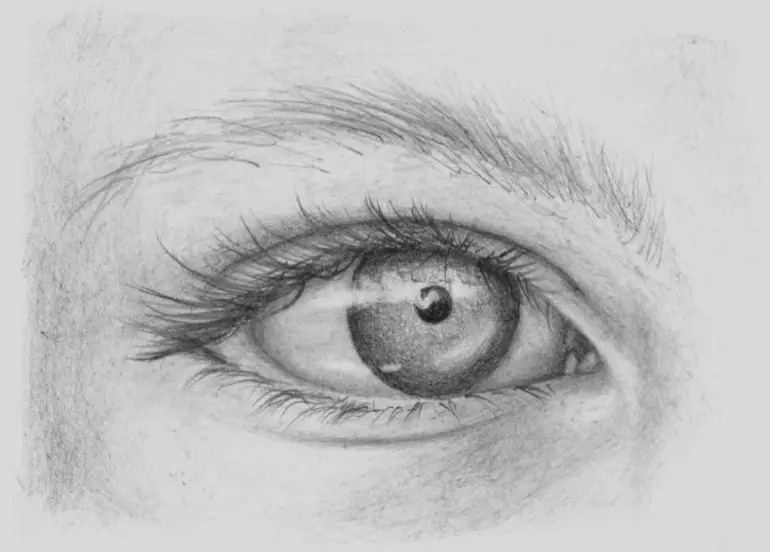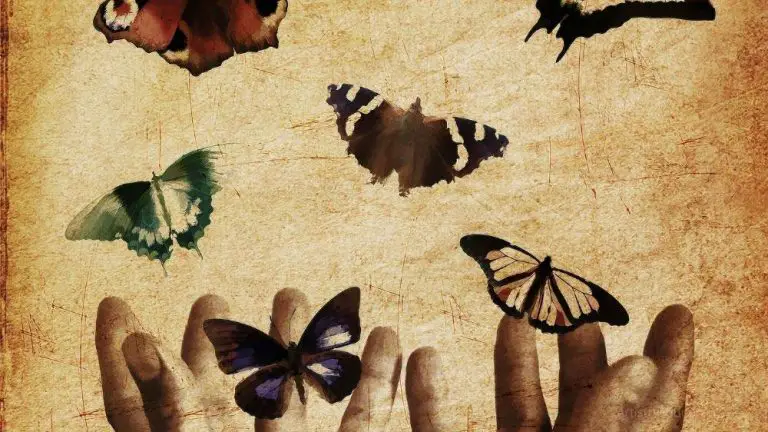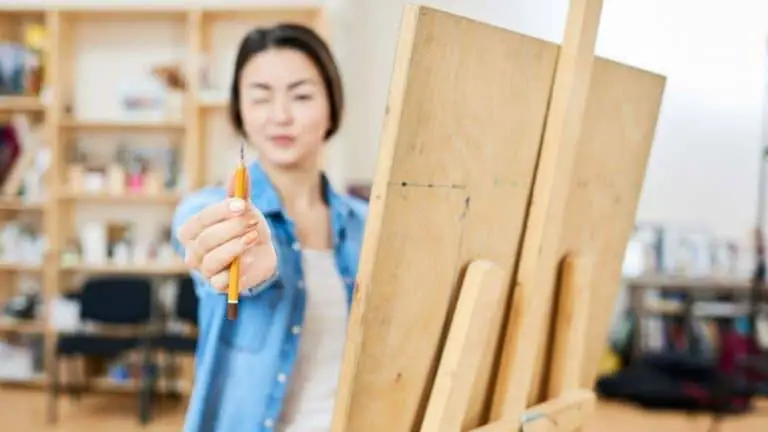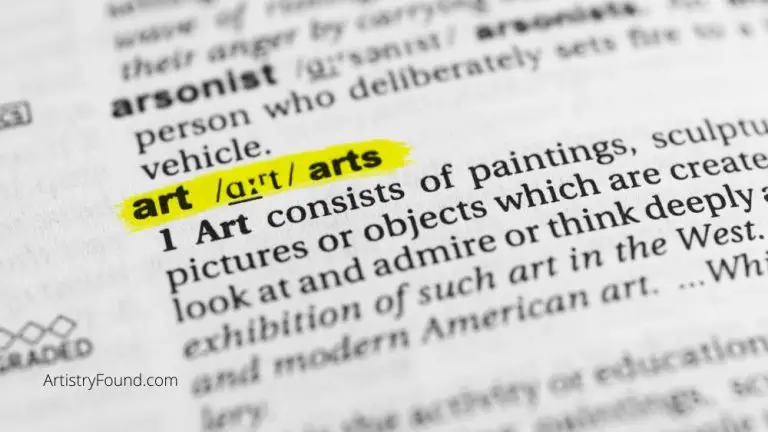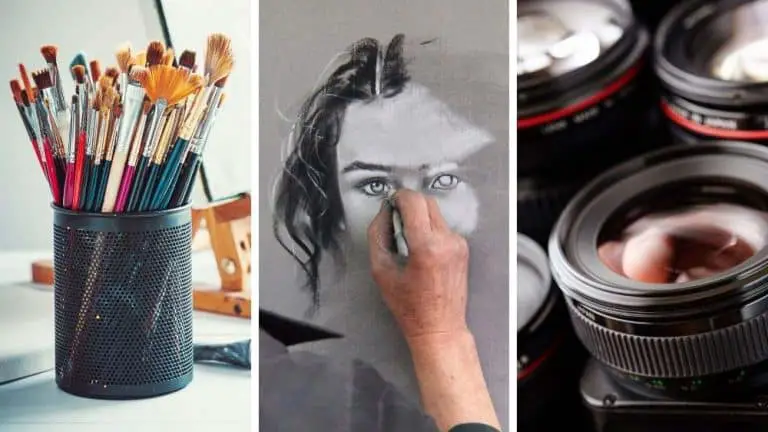Are Artists Introverts or Extroverts? (Explained!)
If you tell someone they’re about to meet an artist, they tend to expect a person who’s either a deep brooding introvert, or a wild and eccentric extrovert! But what’s the actual truth? Are artists introverts or extroverts, and do these traits influence the quality of the art they create?
Artists can be either introverts or extroverts. Intro- and extroversion exist on a spectrum, and artists—like most people—fall somewhere in between these two extremes, often exhibiting traits from both personality types. These qualities, however, are not necessarily indicative of one’s artistic ability.
Certain aspects of each personality trait are often found in the same person, with one trait or the other tending to be the dominant one. While the dominant personality trait may influence their artistic style, chosen medium or even how and where they work, it doesn’t indicate how talented they are as an artist.
Read on to find out all about the creative mind of artistic introverts and extroverts.
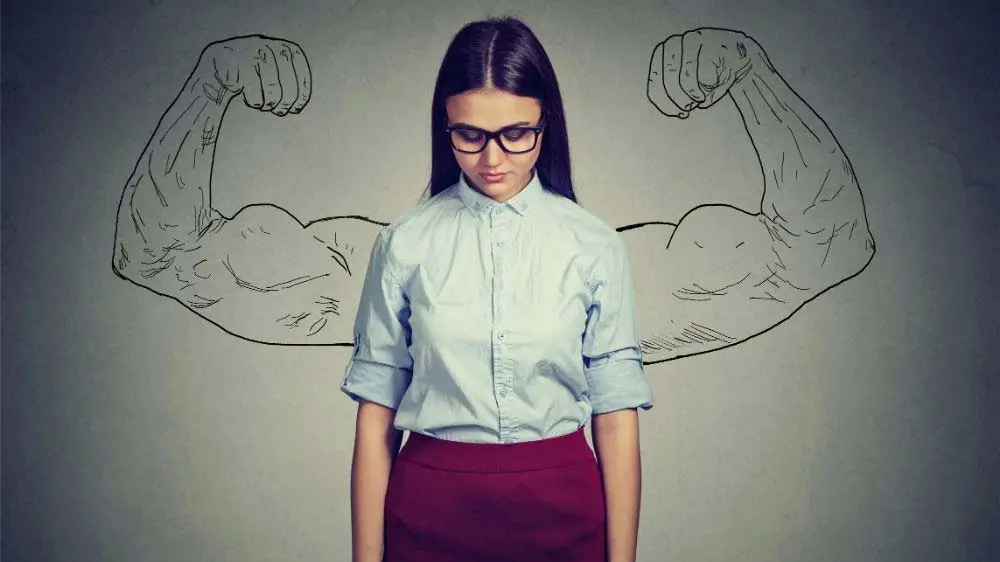
(This article may contain affiliate links and I may earn a commission if you make a purchase)
The Difference Between Introverts and Extroverts
The concepts of intro- and extroversion are often dictated by their extremes. Introverts are loners, and extroverts are outgoing. But there’s so much more to it than that!
Carl Jung described it best by stating that everyone finds certain social situations more mentally exhausting or exhilarating than others, and the classifications of introversion and extroversion are determined by how a person reacts to being involved in a specific social event. Artists included.
What is an Introvert?
Introverts, are people who find it easier to recharge their personal and emotional energy in quiet solitude. This means alone time or time away from social situations. They become quickly drained when surrounded by others and might need time to “recover” after social events.
Introverts prefer small groups of close friends, and usually form deep connections with these people. Around strangers, they’re more likely to be shy, quiet and observant rather than the center of attention.
When faced with a dilemma, introverts are much likelier to internalize issues, meaning they would prefer to think through problems themselves than talk through it with others. This tendency influences the way they experience emotions—often making them more internally intense and turbulent.
What is an Extrovert?
Commonly seen as the opposite of introverts, extroverts are people who thrive on social interaction. This type of person recharges their batteries when they are around other people. In turn, they find it difficult to spend long periods of time alone.
You’ve heard of extroverts being described in multiple ways—the center of attention, the life of the party. In many ways, this is what makes an extrovert precisely who they are. You’re likely to find them in a large group of people, enjoying the social stimulation of others.
Extroverts rarely keep their feelings to themselves. They tend to express themselves verbally and talk to others about their problems. More concerned with their self-expression, they find emotions fleeting but experiences more lasting.
Introverts vs. Extroverts: Who Makes a Better Artist?
It’s a common misconception that introverts are better in artistic fields. Because they internalize, introverts find it harder to talk through problems. Thus, they may turn to another outlets, such as art, to express their feelings.
That’s how it works in theory but this isn’t always the case—humans are complicated, multifaceted beings, so trying to place them into only two categories doesn’t really make sense in practice.
Keep in mind that introversion and extroversion exist on a spectrum, like a sliding scale. People are generally closer to one side of the scale than the other, which becomes their dominant trait, but it’s unlikely that you’ll ever meet a pure introvert or extrovert. The truth is, most people exert qualities from both traits at different times and in different situations.
Personality aspects from both sides of the spectrum can be beneficial to artists and their artwork. What matters most is their ability to express ideas through an artistic medium.
While these personality traits may not affect an artists quality or skill level, they can dramatically influence how an introvert artist works. Since both concern a person’s reaction to social situations, certain occasions could be beneficial to an introvert and be detrimental to an extrovert’s progress. Knowing which side of the spectrum you lean towards can only help improve your productivity.
Introverts and Art
Introverts are more inclined to artistic expression. Due to their tendency to internalize experiences and issues, they are likely to use art as an outlet. They often find difficulty putting an experience into words when it comes to conversations. Since they prefer to show rather than tell, most introverts find art the perfect way to do this.
People with introverted tendencies generally find that they work better by themselves and progress quicker when left to their own devices. Since they tend to lean toward a reflective approach to self-expression, they need time to think through their own ideas. This alone time allows them to let inspiration condense into concepts, then refine those ideas into projects.
Some art mediums that might suit a creative introvert include:
- Painter
- Sculptor
- Illustrator
- Writer
- Nature Photographer
These are all types of creative work that could be within the comfortable confines of an introverted artist’s personality. Each one of these pursuits are often performed alone, where the artist can think, recharge and create.
However, introverted artists might have to jump out of their own comfort zone and work on their social skills to gain recognition. Much of the commercial art world today consists of dealing with other people. For instance, an artist may need to market their work to buyers, or attend art gallery openings in order to succeed.
However, the rise of social media could be considered a boon to a creative person with an introverted personality type. They can continue to pursue their creativity in solitude while using social media to interact and market their work to the world.
These artists could feel burnt out during a time of constant social interaction filled with small talk. Overthinking is one of the more significant flaws of an introvert—this causes a fear of failure that may discourage many artists.
Extroverts and Art
While there seem to be fewer extroverted types in the arts, that doesn’t mean that extroverts are any less talented. Some extroverted qualities can make for excellent artists—such as their flexibility and willingness to take risks. Extroverted artists have the uncanny ability to adapt to new challenges and try new things. These are great qualities for any field, and art is no exception.
Extroverts working in artistic fields will perform better when working with groups. Since they typically like to think out loud, they will find it easier to deal with the refinement of ideas by talking to others. Their projects could also be completed quicker when they have the input of others to consider.
Some art mediums that might suit a creative extrovert will include:
- Actor
- Musician
- Performance Artist
- Architect
- Fashion Photographer
A creative career in one of these fields will almost universally require other people to be involved, where an artist can interact, verbally express ideas, and recharge their batteries.
Whereas introverts may struggle to make connections, extroverts have no such issue. Instead, their difficulties lie in their inability to be comfortable alone. In many cases, art thrives when the artist can lose themselves in their work. This requires solitude, which might cause an extrovert to lose focus and motivation.
Introversion, Extroversion, Mental Health, and Art
The tortured artist has always been a popular trope in media—but every story has an origin. Artists express themselves through their art, regardless of the medium. Whether their expression is social, political, emotional, or even depicts a vital experience, every artist can transpose their inner thoughts to a creation.
This is because every artist has one thing in common: a heightened perception of the world around them. Artists can find inspiration in the mundane and often make bold statements that inspire critical thought in others. Unfortunately, this level of sensitivity comes at a price.
Many creatives are known to have dealt with anxiety or mental illness—from visual artists to writers and actors. This pain, most believe, is what leads to some of their greatest works. Artists use these struggles to inform, inspire, and fuel their creativity. In this case, introverts, being the type of people who internalize their problems, are at higher risk for developing mental illness.
Karl Otto GÖtz, a German artist, conducted many studies to determine how personality and art inform and influence each other. His research showed some impressive results—namely, that artists were significantly more emotionally volatile than non-artists. Another study proved that introverted artists indicated even higher levels of turbulence than their extroverted counterparts.
While extroverts find it easier to express their emotions, the volatility is likelier to take its toll on an introverted person. Due to their difficulty with verbal outlets, many anxious introverts develop mental illnesses such as anxiety or depression.
There is also the matter of an extrovert-oriented society. From a relatively young age, introverted people are pushed to overcome their shyness, and endure social interaction. Social events are considered crucial to advancing in the modern day—we’ve all heard the good old saying: it’s about who you know, and not necessarily about what you know.
In many cases, introverts are forced into anxiety filled social situations and large gatherings. Not only are these draining for an introvert, but they can cause a sensory overload. Over stimulation of the senses can lead to burnout. The dreaded lack of inspiration and motivation may be the death of any passion an introverted artist once had.
As an introvert, if you recognize any of these symptoms in yourself, it may indicate it’s time to back away from socializing for a while and schedule some time and space for you to recharge you mental and physical energies in a solitary environment.
Creative Thinking and Art Can Come From Any Personality Type
We should keep in mind that people are complicated. Introversion and extroversion aren’t mutually exclusive. An extrovert can have introverted tendencies, and introverts can seem more extroverted in a specific environment. Experiences also have an immense influence on personality—an extrovert now could become an introvert in the future and vice versa.
Research may show that introverts are more inclined to the arts, but this does not mean that arts are limited to introverted people. Regardless of your alignment, anyone can be an artist—whether you’re outgoing or shy, there is no prerequisite to creating art.
More From Artistry Found:
- Do Self-Portraits Have to Be Realistic? (With Examples!)
- Artists vs Scientists (Similarities & Differences)
- How Artists See The World (A Different Vision)
- Which Colors Are Used Most in Art? (You May Be Surprised!)
- 10 Reasons Why Artists Make AMAZING Lovers
Sources:
Introversion-Extraversion and Neuroticism in Gifted and Ungifted Art Students: https://journals.sagepub.com/doi/10.2466/pms.1973.36.2.675
A quick overview of Jung’s Personality Theory:
https://www.psychologistworld.com/influence-personality/extraversion-introversion


